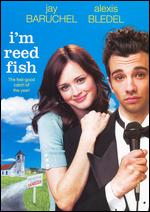|
|
|
|
Bereket's Bio.
|
The Coach as a Leader
When people are asked, "Who is a leader?" many respond by naming politicians, presidents, senators, and governors, military leaders, business leaders, and… successful coaches. Why are coaches included in this list? Because all coaches are leaders, coaching effectiveness is maximized by understanding how to lead. In a way, the relationship between coaches and players is a contract. Players will follow the coach's wishes or demands and in return they expect their reward, whether that is winning, playing time, positive reinforcement, or some other benefit. With that in mind, a coach has the obligation to find out what each individual's wants and desires are and to get them to believe in the ultimate team goal(s). Here are some guidelines for specific implications of what the coach as a leader should do: Master and Apply Current Knowledge. Be willing to learn and willing to take the time to understand correct movement mechanics, strategies, and the fundamental principles of sport. Develop Interpersonal Skills. Develop interpersonal skills especially communication skills. Have a sense of humor but scrap the sarcasm. Players need to feel that they can approach you, if they don't feel that way problems can multiply. Eliminate all Dehumanizing Language. Treat each person with the dignity and respect that they deserve. Give positive reinforcement rather than negative feedback. Offer solutions when criticism is necessary. Control Your Emotions. Athletes treat the coach as the role model and will emulate their behavior. If coaches are on the sidelines yelling at officials and throwing chairs, what message is that sending to the players? Help Athletes Set their own Goals. Goals need to be established as a team and as an individual. Goals should be something that the athletes can actually achieve. Coaches are there to guide athletes in the goal setting process as well as the evaluation of the goals but they are not there to tell the athlete what their goal is or what their goal should be. Live in the Present. Athletes don't need to be consistently reminded how good your team was last year or in prior years. You may use the past as an example but don't compare your athletes or team to prior years. Provide Opportunities for Success. Provide good practices, time for game conditions, sensible scheduling and a pleasant atmosphere. The administrative aspects of the job are just as important as any other aspect. Planning, preparation, and budgeting are very important functions. A coach must be a leader, teacher, and an administrator all at once. Every coach has the ability to lead but it takes work to become a good leader. By following and living by these guidelines, you will be a long way on your path to becoming a good leader. Click here if you are looking for a team lead coaching service. Coaching tips for gaining clarity on what a coaching relationship can do for you
Leadership development is about helping people build the capability to engage in productive relationships and improve their effectiveness with organizational change. The reigning alternative to leadership coaching in the United States is the $10 billion a year Corporate America lavishes on leadership training. Studies show that the benefits of this seminar-heavy schooling usually vanish within a few months. But research from Case Western Reserve University's Weatherhead School of Management shows that the impact of coach-like training can last seven years. The emotional-intelligence skills coaches specialize in helps leaders create more productive cultures, which in turn drive up profits, according to Daniel Goleman, Annie McKee, and Richard Boyatzis in their book, Primal Leadership. “The crux of leadership development that works is self-directed learning: intentionally developing or strengthening an aspect of who you are or who you want to be, or both.” Primal Leadership by Daniel Goleman, Richard Boyatzis & Annie McKee (Harvard Business School Press). Become a Key Element of Interdependent NetworksWhen you become a linchpin in your web of personal and business relationships, you attract resources and opportunities. A critical success factor is gaining a better understanding of how to productively use, redefine and build a porous network of partnerships. Effective corporate leaders are strategic in the way they share knowledge. They use their knowledge to earn trust and build their reputation within their company and industry. Personal Development leads Business DevelopmentPersonal growth can seem like a painful process, especially when you approach it alone. People want to be led, not managed. Organizational leadership is an art that must be learned, then earned. As a leader, you have a unique need for objective insight into what you think and why you think it. A coach can help you to gain the insight that leads to clarity for making clear, thoughtful and confident decisions. And can help keep you on your chosen career path. No One Likes ChangeMost people are slow to accept change. This is illustrated in Wallace Stegner's to-the-point quote, "Chaos is the law of nature. Order is the dream of man." Because this is not your father's economy, a major business buzzword today is "resilience" defined as the ability to recover quickly from illness, change or misfortune; buoyancy. In today's environment of changing technology and evolving complexity, we don't have to fake it. Yet, we must keep growing our abilities to grasp the success we seek. To be an economic survivor, one must be resilient in their career, company and community. A coaching relationship makes it easier to cope with the chaos by learning key personal and business strategies---that may not be known inside the walls of your workplace. Awareness drives transformationTransformation is the natural outcome when you bring awareness to your life. Awareness is a nonjudgmental seeing. It is an objective, noncritical witnessing of the nature of any particular circumstance or situation. When we become aware of something, it is a call to action to change or fix what is discovered. Sometimes, awareness itself is enough to facilitate resolution without doing anything about what is seen. The problem fixes you rather than you fixing the problem. Coaching yourself to look for pitfalls that stand in the way of where you want to be can help you become aware of and thus avoid unintended consequences. Coaching others, such as business owners, requires the readiness and willingness of the person-to-be-coached to explore new perceptions. Coaching DefinedProfessional coaching is an ongoing partnership that helps clients produce fulfilling results in their personal and professional lives. Through the process of coaching, clients deepen their learning, improve their performance and enhance their quality of life. In each meeting, the client chooses the focus of conversation, while the coach listens and contributes observations and questions. This interaction creates clarity and moves the client into action. Coaching accelerates the client's progress by providing greater focus and awareness of choice. Coaching concentrates on where clients are today and what they are willing to do to get where they want to be tomorrow. At Schaller International LLC, they help team leaders to achieve performance increase and understand the difference teams can make. Where to Get Help for Depression
Where to Get HelpIf unsure where to go for help, check the Yellow Pages under “mental health,” “health,” “social services,” “suicide prevention,” “crisis intervention services,” “hotlines,” “hospitals,” or “physicians” for phone numbers and addresses. In times of crisis, the emergency room doctor at a hospital may be able to provide temporary help for an emotional problem, and will be able to tell you where and how to get further help.
How to Help Yourself if You Are DepressedDepressive disorders make one feel exhausted, worthless, helpless, and hopeless. Such negative thoughts and feelings make some people feel like giving up. It is important to realize that these negative views are part of the depression and typically do not accurately reflect the situation. Negative thinking fades as treatment begins to take effect. In the meantime:
How Family and Friends Can Help the Depressed PersonThe most important thing anyone can do for the depressed person is to help him or her get an appropriate diagnosis and treatment. This may involve encouraging the individual to stay with treatment until symptoms begin to abate (several weeks), or to seek different treatment if no improvement occurs. On occasion, it may require making an appointment and accompanying the depressed person to the doctor. It may also mean monitoring whether the depressed person is taking medication. The depressed person should be encouraged to obey the doctor’s orders about the use of alcoholic products while on medication. The second most important thing is to offer emotional support. This involves understanding, patience, affection, and encouragement. Engage the depressed person in conversation and listen carefully. Do not disparage feelings expressed, but point out realities and offer hope. Do not ignore remarks about suicide. Report them to the depressed person’s therapist. Invite the depressed person for walks, outings, to the movies, and other activities. Be gently insistent if your invitation is refused. Encourage participation in some activities that once gave pleasure, such as hobbies, sports, religious or cultural activities, but do not push the depressed person to undertake too much too soon. The depressed person needs diversion and company, but too many demands can increase feelings of failure. Do not accuse the depressed person of faking illness or of laziness, or expect him or her “to snap out of it.” Eventually, with treatment, most depressed people do get better. Keep that in mind, and keep reassuring the depressed person that, with time and help, he or she will feel better. Check Schaller International LLC for more information. Fame Audit: Dakota Fanning
NAME: Hannah Dakota Fanning AssessmentTo be totally honest, we don't feel great about our task today: auditing the fame of our youngest subject ever. But we can't be deterred; if we shied away from profiling stars who were likely to sob and throw undignified temper tantrums if they ever happened to read their Fame Audits, we never would have covered Debra Messing. The indisputable fact is that Dakota Fanning is way too famous. It's like, try to think how many movie roles and TV guest star slots there are for thirty-two-year-old women. Now imagine what it would be like if approximately 97% of those available roles went to Jennifer Garner. (We know; in the week leading up to the premiere of 13 Going On 30, it kind of seems like they already do.) If that were the case, Jennifer Garner would be as famous as Dakota Fanning is now. Speaking of fame, Hollywood Insider has the inside scoop on the hottest celebrity news and gossip out right now. Don’t forget to check out their website after this audit, maybe you can come with some fame audits of your own. Fanning has somehow become the Macaulay Culkin of her generation, if Macaulay Culkin were a not especially choosy girl. (Though we haven't seen him much lately. Who knows what changes puberty has wrought south of the border, down Mexico way? He already could be a not especially choosy girl.) We admit that Culkin made some stinkers in his time -- Richie Rich, Getting Rid of Dad -- but Fanning has coasted amazingly far when you consider she has yet to make her own Home Alone. Sure, I Am Sam netted that Oscar nomination for Sean Penn, but do you know anyone who's seen it? Yet that was (apparently) the vehicle that convinced the world's casting directors that, in addition to possessing the cherubic blonde good looks of every child actor since Shirley Temple, Fanning could also act, and started throwing every prepubescent-girl role at her. She's young Reese Witherspoon in Sweet Home Alabama! She's the screeching, kidnapped, imperiled child in Trapped! And now she's carrying a comedy -- Uptown Girls! And taking a dainty little dump on Dr. Seuss's legacy in The Cat in the Hat! Oops, getting in a guest-starring role on Friends...before it's too late! And back to previously explored territory -- another imperiled kidnapped child in this week's Man on Fire! The only role in which we couldn't quibble with Fanning's casting was Taken, since at least in that one, there was a decent chance that her character would turn out to be an alien, which would explain why she's so preternaturally self-possessed. Because Fanning is creepy. All child stars are. They're the same size as real children, but they have that eerily grown-up poise. Have you ever seen a child star on a talk show? They talk about their next "project," and what their managers tell them, and how great it was to work with this actor or that director. If you close your eyes, it's easy to imagine that you're listening to a grizzled old showbiz veteran and not a fourth-grader. I saw Fanning on The Ellen DeGeneres Show not long ago; girlfriend's got bigger bags under her eyes than I do (and I ain't ten). She probably drinks coffee. I'll bet she smokes. And you just know Fanning's parents are going to prolong her time in the sun as go-to child star (and avoid the horrific decutening currently being suffered by Haley Joel Osment and Frankie Muniz) by feeding her whatever anti-aging drugs Jonathan Lipnicki's parents have used to keep him looking absolutely no different than he did in Jerry Maguire. Eight years ago. Or maybe they'll trust in Fanning's natural hormones to turn her into a toothsome young thing, and transition her from Cat in the Hat's pigtails and pinafores to ultra low rise jeans and crop tops of the sort Hilary Duff sported in The Lizzie McGuire Movie, when she was just five years older than Fanning is now. But then again, Fanning does have an even younger, cuter, probably blonder sister, Elle, who is now six. So maybe their parents' long-term plan is always to keep at least one Fanning in reserve. Dakota Fanning is the creepiest child star working today so, for that reason alone, she should work less and hence be much less famous. Furthermore, seeing her on talk shows proves that she's being robbed of a childhood and therefore, she should work less and hence be much less famous. People, it's just the right thing to do, no matter how you slice it. Slice her a smaller sliver of fame, and do it soon. Assets
Liabilities
Fame BarometerCurrent approximate level of fame: Hilary Duff Deserved approximate level of fame: Vivien Cardone I'm Reed Fish: Charming little indie
Rating (out of 5): ***½ If you're looking for a light romantic-comedy/coming-of-age flick, you could do worse--much, much--than renting I'm Reed Fish, which fills this bill nicely, even adding extra charm due to the movie's location: a tiny Pacific Northwest town in which everybody knows everybody (and their business). And then, once you're settled in for something sweet and happy, in a single moment of surprise, director/co-writer Zackary Adler (along with Peter Alwazzan, Rhett Wickham and, yes, Reed Fish) turns this movie into a supremely sophisticated take on "true" love, reality and the process of maturation--all without giving up any of its sweetness or charm. As the credits rolled, my companion and I expressed amazement at the bright young moviemakers whose work we've recently enjoyed (Snow Cake, Severance, Starter for 10 and Closing Escrow--all of which exhibit these smarts to some extent, but I'm Reed Fish more so.) Jay Baruchel (lately one of the weird roommates of Knocked Up and formerly the star of Undeclared) plays Reed and proves that he can carry a movie in the leading man department. He's ably assisted by Victor Rasuk (the lead in Raising Victor Vargas, Lords of Dogtown), Alexis Bledel (TV's Gilmore Girls, Sisterhood of the Traveling Pants and the underseen "Tuck Everlasting"), Schuyler Fisk, DJ Qualls, Katey Sagal and others. There is much to commend in this seemingly effortless concoction, but among the most important is that when you reach the finale you'll see the characters have truly changed--at least enough to make the necessary difference to their own life and those of the folk they care about. Only one question: At the end, who's the girl on the roof? We went back to replay this bit several times and even re-checked the cast list, as well. I have a theory but will not ruin anything by explaining it here. For more news and reviews about Hollywood movies, gossip and entertainment, check out Hollywood Insider. Catch That Kid
When it comes to tapping a dried out well of original ideas, the Hollywood think tank never fails in its numbing attempt to prove this very concept as being true to form. With the excitable Spy Kids trilogy wrapping up what was a fun-filled turned exhaustive kiddie genre ride, director Bart Freundlich wants to eagerly keep the fleeting momentum going with his brand of techno-tykes and their pseudo-intriguing shenanigans in the implausible hyperactive giddy go-cart caper Catch That Kid. Ah, there’s nothing like the repetitive mode of pitting precocious punks against the stylized and high stakes background of a convoluted heist flick. As endearing and cheeky as the hokey antics of the aforementioned Spy Kids flicks were before they too wore out their welcome, at least these movies were inspired by the nonsensical nuances that made them a joy to behold. The impressive spry special effects coupled by the enthusiasm of the juvenile stars and the complex gadgets they toyed with so convincingly made for some automatic cheesy family fare that was uniquely palatable. But in Catch That Kid, this junior-sized Mission: Impossible wannabe is nothing but an overwrought knockoff that doesn’t measure up to the recycled blueprint of the frolicking films it wants to emulate so desperately. We’re introduced to Maddy (Kristen Stewart from Panic Room), a pre-teen that enjoys the recreational passion of rock climbing. Her heralded hobby will soon come into play when she’s forced to utilize it to save her sickly father (Sam Robards), a former avid climber from which his carefree daughter draws her interest. Apparently Maddy’s dad, who previously suffered an unnoticeable spinal injury while trying to conquer the challenging and mighty Mount Everest, is in need of an operation and needs some serious treatment. Since the operation will cost around a quarter of a million dollars and the father’s meager living is running a go-cart business there’s not enough insurance money to cover the overblown medical expenses. Hence, Maddy needs a quick scheme to solve the financial solution of rescuing her beloved dad from his delicate health condition. With no options available to her that immediately seem reasonable Maddy decides to take on the major task of robbing a high-security bank in an effort to come up with the solid cash to save her father’s weakened life. But Maddy needs some assistance in pulling off this risky mission. Wasting no time, she enlists the help of friends Austin (Corbin Bleu) and Gus (Max Thieriot) in trying to pull of this exaggerated plan. However, in securing the boys’ participation in this daring agenda Maddy must manufacture affection for the smitten twosome as an incentive for them to join her in this wily and ill-advised activity. The crafty kids may have their eyes set on stealing funds from this highly protected financial institution but the reality is that this particular bank will be a tough one to crack for a couple of convenient reasons. First, the bank’s complicated security system was designed and developed by Maddy’s brilliant-minded workaholic mother (Jennifer Beals). Secondly, the emotional impact may cloud Maddy’s judgment seeing as though this is the very same bank that refused to loan her family the needed money to cover her father’s medical debts. Nevertheless, Maddy and her lovelorn sidekicks are determined to use all the resources (and their personal talents) to invade this financial facility that will ultimately add some relief to the existing stress. With Maddy’s climbing prowess, Gus’s mechanical mindset, and Max’s computerized competency these three rug rat thieves will try to tap a safe that has more guarded fixations than Buchingham Palace. Catch That Kid is a loose remake of the extremely popularized 2002 Danish film Klatretosen, a child-like version of Ocean’s Eleven. Freundlich and screenwriters Michael Brandt and Derek Haas dutifully concoct a busy yet cockeyed script that has the action-oriented gestures of these kiddie criminals doing the wayward naughtiness via the “desperate times calls for desperate measures” mantra. However, the movie’s handlers never quite capture the imagination or whimsical aspect of the youthful protagonists’ indiscretion. Unlike Robert Rodriguez’s Spy Kids movie series, Catch That Kid lacks the down-to-earth playfulness that it takes to adequately spice up the proceedings to a whole new level of appreciation. The kids in Catch don’t seem to thrive on the energy or ridiculousness of their high-wire situation whereas you got the sense that the Spy Kids were caught up joyously in their own outrageous fantasy. The novelty of having a trio of pre-teens infiltrate a swank financial institution in the name of a selfish good cause had its merits in theory. But Freundlich never expounds on this promising premise as much as he should have with the roguish possibilities. The heist theme itself is overplayed hence the originality factor is thrown right out of the window. The adult members of the cast are routinely clueless and lost all glimpses of common sense that satisfies the remote ability for these kids to perpetrate a fraud and possess a one-in-a-million shot of breaking into this seemingly elusive vault. Although the movie bogs us down with countless techno-trinkets that the kids use to carry out their kooky yet complex mission, there’s nothing special to ignite the audience to buy into the empty-minded ribaldry. Watching Catch That Kid is like being involved with an overactive video game yet there’s no joystick to control the course of the outcome. So catch whatever you want…a cold, a fever, a taxicab, a fish, a curveball to the inside corner of home plate, etc. Just don’t Catch That Kid because it’s simply not worth your escapist time to acknowledge when there will be so many other ambitious kiddie-oriented fantasies to duck and dodge with noted aplomb. Click here to read more exciting Hollywood movie reviews and entertainment news. Exactly What Is ‘Drop-Dead Beautiful’??
What, Specifically, Is Considered A Drop-Dead Gorgeous-or-Beautiful Actor Or Actress? I don’t know if the actress who asked the question lives in Los Angeles, but I am going to use this city of the film and TV industries, to better describe what a casting director means when he or she uses that actor or actress description. Because it’s due to a certain specific difference about this city, that probably contributed to the need for such a description to become part of the Acting Business colloquy. If You Have Ever Visited Los Angeles, Or Are A Recent Transplant, This You Know… There is a much larger concentration of good-looking people in Los Angeles, than anywhere else in the country. Why? There’s a very good reason: Hollywood is a beauty magnet. (It’s also a magnet for some other less-appealing traits, but we can discuss that at a different time.) Everyone who ever won a beauty contest in their tiny little town, or was the prettiest in their high school, or wanted to model but wasn’t tall enough…or just had enough looks to consider it to be their ticket out and off to something more exciting and better (or stardom)…moves to L.A. Mostly, they come to act. And…the very beautiful continue to keep coming. It seems that all the beauty population keeps replenishing and increases, because so many come just after high school or college. That creates a larger percentage of young adults here, than in other places anywhere else in America. (Except, perhaps Boston, because of all it’s colleges.) The Los Angeles Population Is Young And Attractive. Many Are Actors. In any cafe, restaurant, shopping mall, the people look very different here, in Los Angeles. I am reminded of this anytime I have out-of-town visitors. Especially, guys. When old friends come to visit, one of the first things they remark, is how they’ve never seen so many beautiful people, in one place. It’s mostly an observation about the women. But there are some good-looking men too. There’s two other factors that create the visual experience. One is the weather. The Los Angeles climate is warm, most of the year, so no jackets are necessary. Which means there’s a lot more physicality on view, that isn’t covered for warmth. And, since the climate is so mild, it makes it a whole lot easier to work out, outside. People are in better shape here. They just are. People also look their best, and the focus is more on the physical, here. Lots of people who would be considered average or a little above, in another town, learn how to style themselves to their best advantage. Presentation counts, here in L.A. and it shows in the general population. (Again, that too can have it’s downside.) Since Los Angeles is the ‘movie capital |